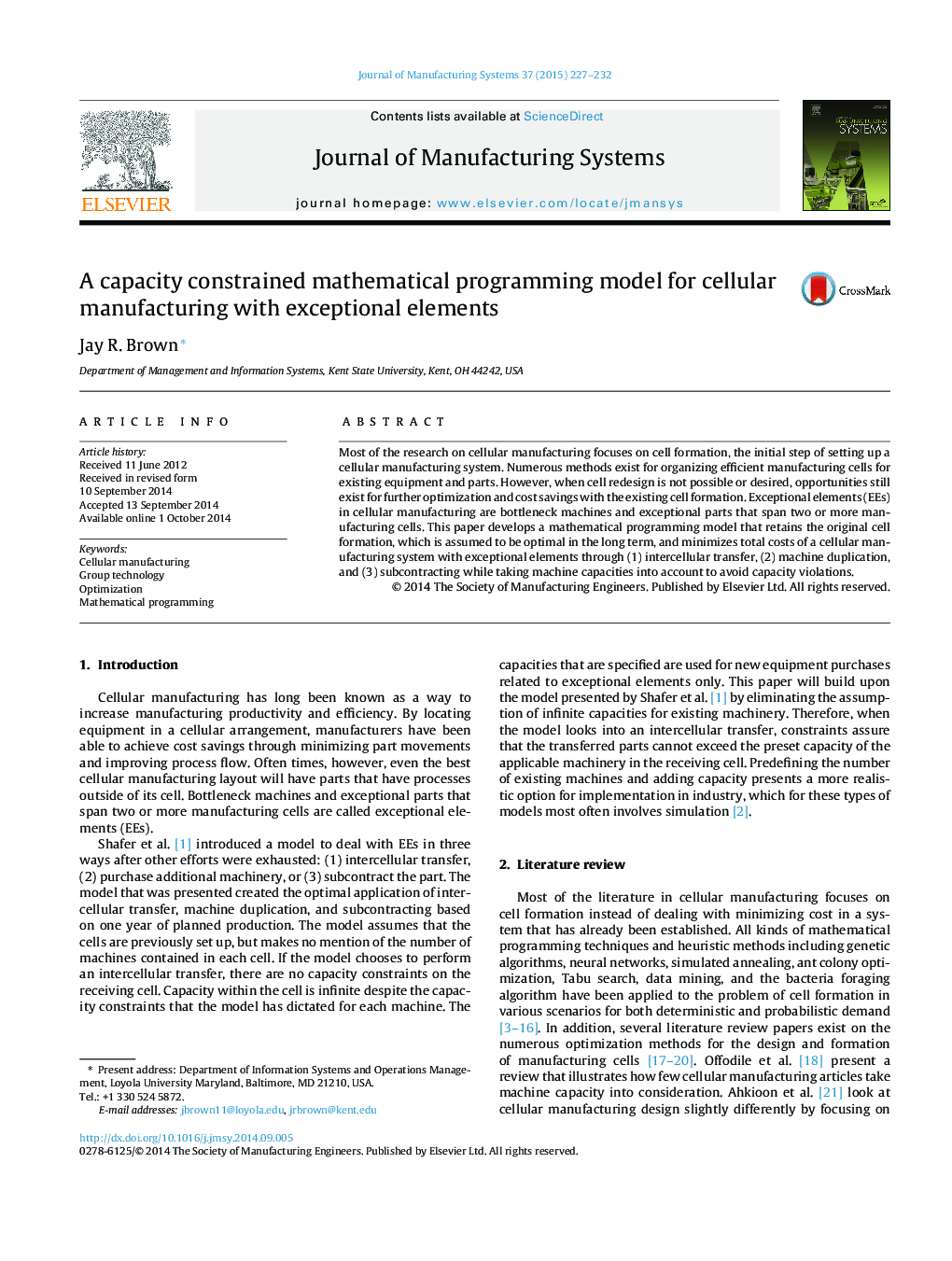| Article ID | Journal | Published Year | Pages | File Type |
|---|---|---|---|---|
| 1697540 | Journal of Manufacturing Systems | 2015 | 6 Pages |
•A cellular manufacturing model is optimized to minimize costs associated with exceptional elements.•Costs are minimized through intercellular transfer, machine duplication, and subcontracting.•Machine capacities are included in the constraints and results are compared with earlier work.•The capacities dramatically change the results and outlook on cellular manufacturing optimizations.
Most of the research on cellular manufacturing focuses on cell formation, the initial step of setting up a cellular manufacturing system. Numerous methods exist for organizing efficient manufacturing cells for existing equipment and parts. However, when cell redesign is not possible or desired, opportunities still exist for further optimization and cost savings with the existing cell formation. Exceptional elements (EEs) in cellular manufacturing are bottleneck machines and exceptional parts that span two or more manufacturing cells. This paper develops a mathematical programming model that retains the original cell formation, which is assumed to be optimal in the long term, and minimizes total costs of a cellular manufacturing system with exceptional elements through (1) intercellular transfer, (2) machine duplication, and (3) subcontracting while taking machine capacities into account to avoid capacity violations.
